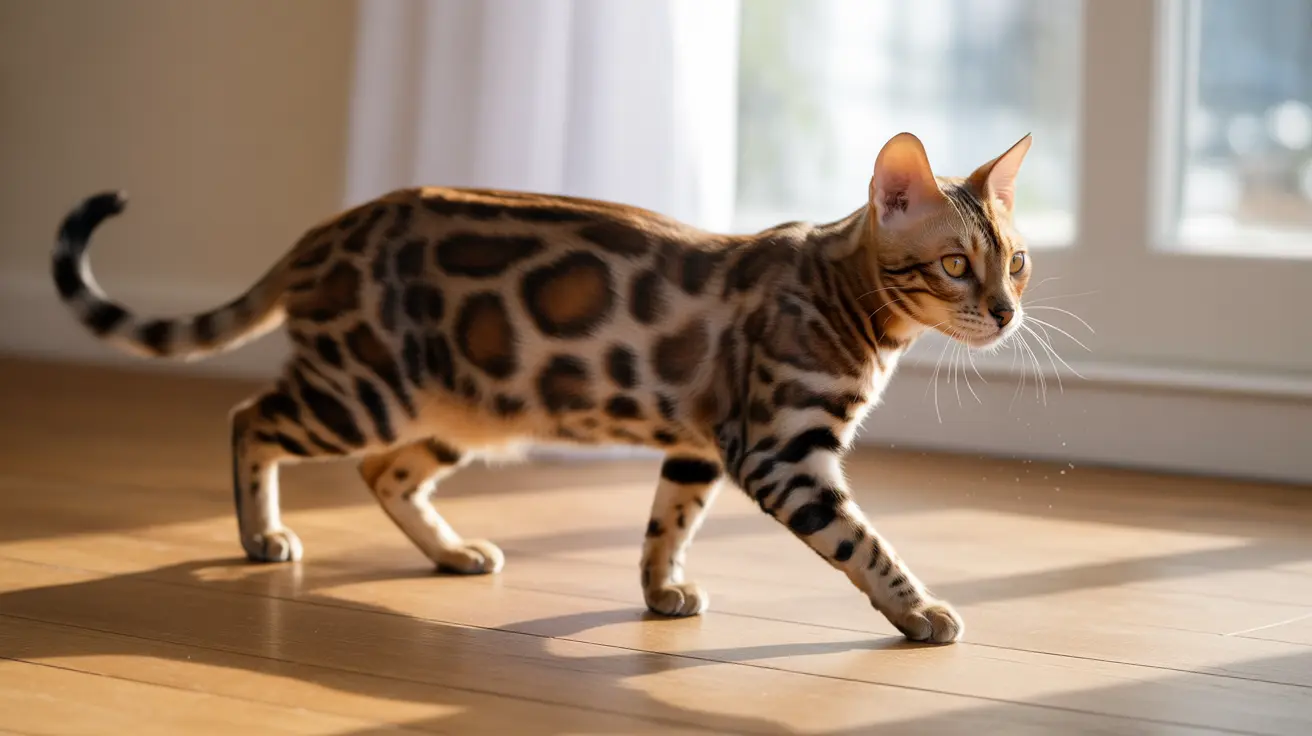Introduction
Ever wondered why cats move with such mesmerizing grace and stealth? The way cats walk is a masterpiece of evolutionary engineering, combining precision, efficiency, and silent movement into one fluid motion. From their specialized paw structure to their unique walking patterns, cats have developed incredible adaptations that make them some of nature's most accomplished walkers.
Understanding how cats walk isn't just fascinating—it's also crucial for pet owners who want to monitor their feline friends' health and well-being. Let's explore the remarkable mechanics and features that make cat locomotion truly special.
The Unique Architecture of Cat Movement
At the heart of a cat's walking ability lies their digitigrade stance—meaning they walk on their toes rather than flat feet. This evolutionary adaptation provides them with superior balance, agility, and the ability to move almost silently. Their specialized paw pads act as natural shock absorbers, while retractable claws ensure precise grip when needed.
The feline spine's extraordinary flexibility, combined with powerful muscles and ligaments, allows cats to execute a wide range of movements with remarkable control. This anatomical structure enables them to maintain perfect balance while navigating various surfaces and situations.
The Four-Beat Walking Pattern
Cats typically employ a four-beat walking gait, where each paw moves independently in a specific sequence. During normal walking, they maintain two or three paws on the ground at any given time, ensuring stable movement. This pattern creates their characteristic fluid motion and helps distribute weight evenly across their body.
Most remarkably, cats practice "direct registering"—placing their hind paws exactly in the footprints of their front paws. This technique not only minimizes noise but also helps them navigate difficult terrain with incredible precision.
Specialized Gaits and Movement Patterns
Beyond their basic walk, cats possess several specialized gaits for different situations. They can seamlessly transition between a careful stalk, an efficient trot, and a full gallop when needed. Each gait serves a specific purpose, from energy conservation during casual movement to maximum speed during pursuit or play.
During stalking, cats move with heightened precision, keeping their body low and their movements controlled. This hunting gait showcases the remarkable muscle control and coordination that makes feline movement so distinctive.
Health Indicators in Cat Walking Patterns
A cat's walking pattern can reveal important information about their health. Normal feline movement should be smooth, balanced, and confident. Any changes in gait, such as limping, uneven weight distribution, or reluctance to move, could signal underlying health issues.
Regular observation of your cat's walking patterns can help identify potential problems early, from minor injuries to more serious conditions like arthritis or neurological issues. Early detection often leads to more successful treatment outcomes.
Frequently Asked Questions
How do cats walk so quietly and gracefully compared to other animals?
Cats achieve their silent, graceful movement through a combination of their digitigrade stance, soft paw pads, and precise foot placement. Their ability to directly register (placing hind paws in front paw prints) also contributes to their smooth, quiet movement.
What is digitigrade locomotion and how does it affect a cat's walking?
Digitigrade locomotion means walking on toes rather than flat feet. This gives cats better shock absorption, increased stealth, and superior agility compared to animals that walk on the entire foot.
Why do cats place their hind paws exactly where their front paws stepped when they walk?
This behavior, called direct registering, helps cats move more quietly and maintain better balance. It's especially useful when navigating difficult terrain or hunting, as it ensures secure footing.
What are the different types of gaits cats use and when do they use them?
Cats use several gaits: walking (for normal movement), trotting (for moderate speed), and galloping (for maximum speed). They also employ a specialized stalking gait for hunting or approaching prey.
How can changes in my cat's walking pattern signal health or mobility problems?
Changes in walking patterns, such as limping, reluctance to jump, or uneven weight distribution, can indicate various health issues. These might include arthritis, injury, neurological problems, or other medical conditions requiring veterinary attention.
Conclusion
The way cats walk represents one of nature's most refined movement systems, combining efficiency, stealth, and precision. Understanding these mechanisms helps us better appreciate our feline companions and monitor their health more effectively. Whether stalking prey or simply crossing a room, cats demonstrate the remarkable results of millions of years of evolutionary refinement in their walking patterns.






